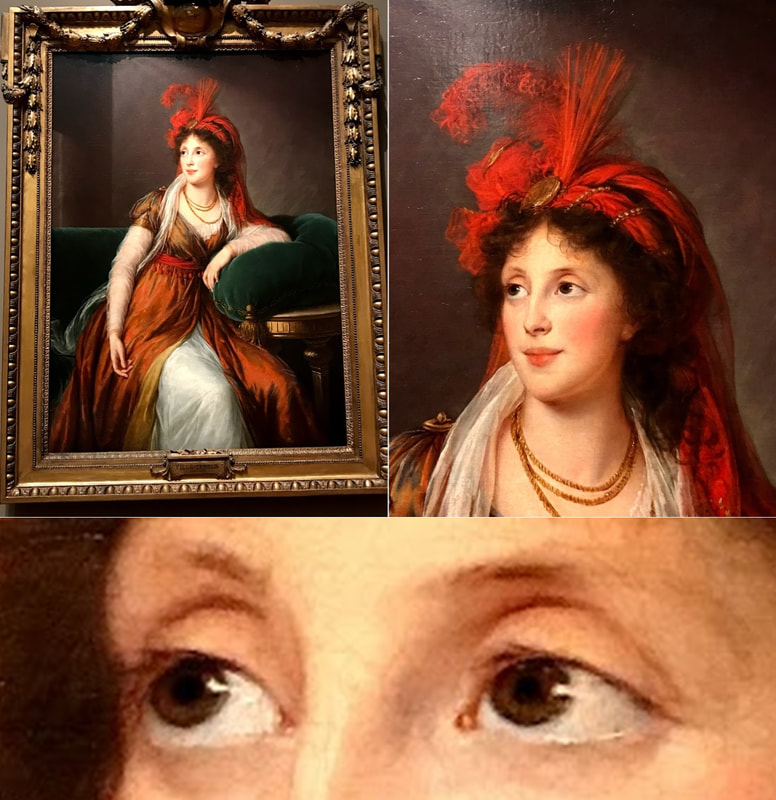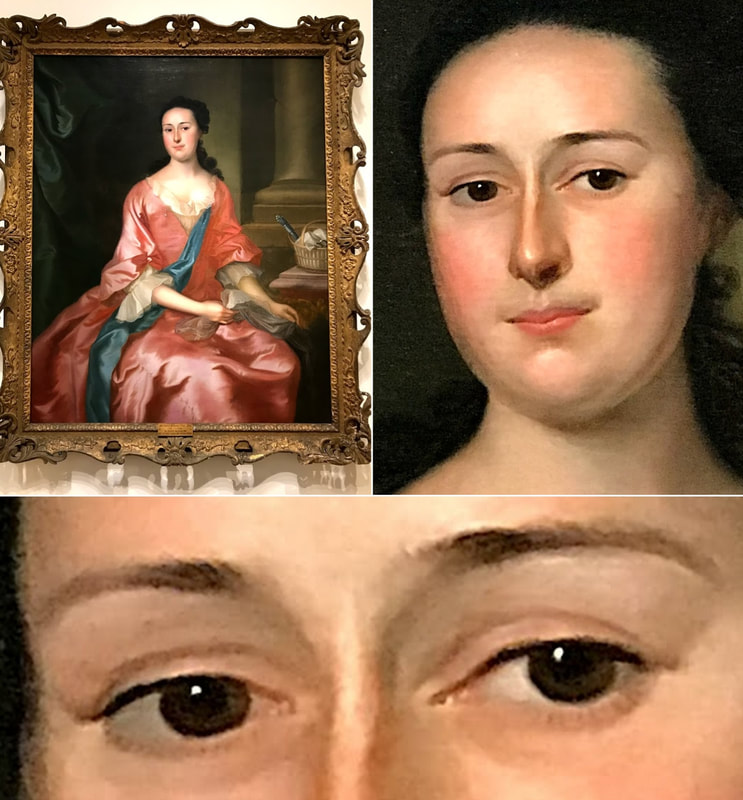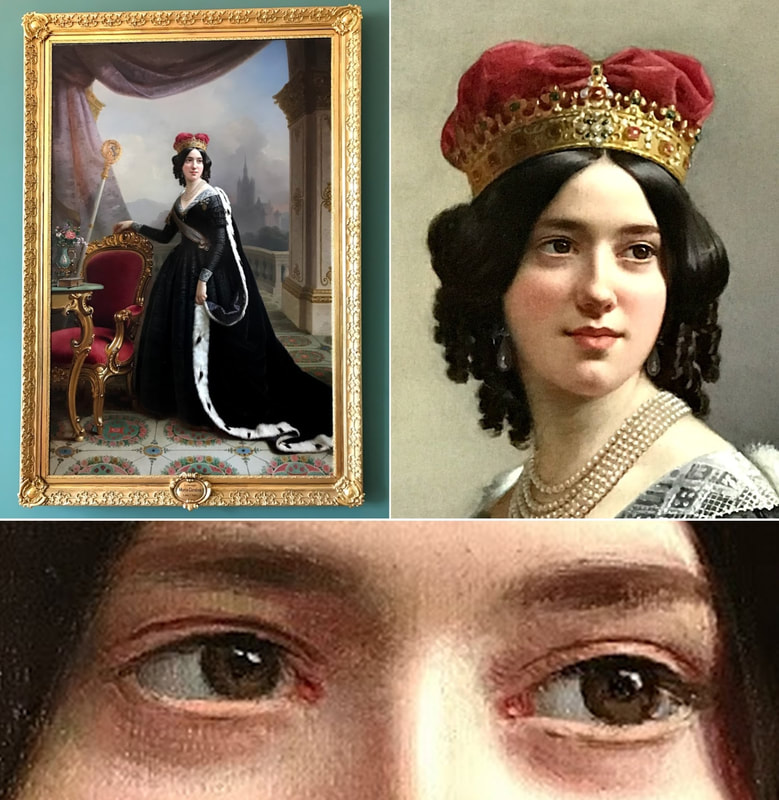|
The video below features a stela found in the Mayan city of Caracol in Belize, which is exhibited at the Penn Museum in Pennsylvania. Mayans used these stones to mark time. This stela, which shows an image of the ruling king, celebrates a date equivalent to May 10, 613 CE. The stone features an elaborate design that includes the ruler, his attire, and portraits of his ancestors. Besides the anthropological and historical significance of the stone, a thing that caught my attention is how the lines in the figure on the stone were traced. The creators of the museum exhibit chose an LCD light projector that traces with white lines the contours of the design of the stone when you press a button and them untraces them after several seconds as is shown in the video. I thought it would be interesting to film the tracing of the design by the projector in slow motion, but I was surprised by the video I obtained which showed the white lines of the stone flickering in a pattern that moved from left to right and that seemed to display occasional flashes of color. When I examined the video frame by frame, I found that the LCD projector did not use white light to create the lines at all. It used an alternating pattern of blue, purple (or red), yellow, and green lines to create the sensation of white lines. This pattern had an apparent left to right movement which maybe has to do with the very fast transition from one color to another.. These types of projectors are quite sophisticated, and if you are interested you can find an explanation of how they work here. The photographs of the stela can only be used with permission of the author.
0 Comments
All of us have seen fire burning. Fire emits light of its own, and the colors we associate with fire are colors such as red, yellow, orange, and blue. Additionally, when a regular light beam is directed at a regular fire, it will go right through it, so fire is not an entity that casts a shadow. In the video below, James Orgill from the YouTube Channel The Action Lab manipulates the lighting and the material burning in the fire to produce black fire, a fire that absorbs light and casts a shadow! Most people are amazed by the multicolored fishes that they see in aquariums. Many wonder how such fishes can survive in the wild. After all, aren’t those bright colors on their bodies like a bull’s eye for predators? What must be remembered is that different wavelengths of light are absorbed by water to different extents. The most extreme case is that of red light. In the video below Kendall Roberg shows how colors change the deeper you dive. The video is about selecting the right fishing lure, but it demonstrates that as depth increases, the the color red is perceived as red to a lesser degree (because there is less red light to reflect) until it comes a point when it appears black. Other colors are also affected, but not as much. The reflection of light by the eyes is considered by many painters to be an important detail that can make or break the whole painting in terms of making it look lifelike, and such reflection has been depicted by various painters over the years in many shapes and locations on the pupil and iris of the eyes of the individuals they painted. Below is a sampler that I have put together from my collection of photographs. Painting of Russian Princess Anna Alexandrovna Galitzin by Elisabeth Louise Vigee Le Brun (c. 1797). Baltimore Arts Museum, Baltimore, U.S.A. Painting of Eunice Brown Fitch, wife of American businessman Timothy Fitch, by Joseph Blackburn (1760). Peabody Essex Museum in Salem, Massachusetts, U.S.A. Painting of Archduchess Maria Karoline of Austria when she was Princess-Abbess of the Theresian Royal and Imperial Ladies Chapter of the Castle of Prague from 1844 to 1852 (painter unknown). Rosenberg Palace, Prague Castle, Prague, Czech Republic. Painting of American art collector and Amateur photographer Sarah Lawrence Brooks by John Singer Sargent (1890). The Peabody Essex Museum in Salem, Massachusetts. U.S.A. But the importance of depicting the reflection of light by the eyes goes beyond art. For some living things it can be a matter of life and death. Many butterflies, moths, and caterpillars have evolved eye spots on their wings or bodies that imitate eyes to deter predators, and these eye patterns also have spots that mimic that twinkle in the eyes! Butterfly image from pikist is free for use under a public domain license. All other photographs are property of the author and can only be used with permission. What we see with our eyes is visible because light bounces of surfaces in the world around us and then interacts with the receptors in our eyes. In this sense we “see” light all the time. But, much in the same way we can stand next to a train track and watch a train speeding by, can we see a beam of light speeding past us? Until recently this was extremely difficult because light travels incredibly fast (186,282 miles per second). In the video below, the folks from Planet Slow Mo, Gavin and Dan, visited the Compressed Ultrafast Photography (CUP) Laboratory at the California Institute of Technology (Caltech) where researchers are able to film events at speeds up to 10 trillion frames per second. By exploiting the scattering of light as it moves through a medium, the researchers are able to film beams of light as they travel! Check the video below. |
Details
Categories
All
Archives
June 2024
|





 RSS Feed
RSS Feed